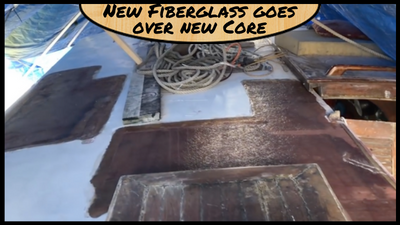Fiberglass to be exact. In a recent post, we spent time talking about how to make templates for the new core. We also covered how to cut and install the new core, as well as why Marine Grade Plywood is a no-brainer for repairs like this. (Or if you prefer, see the video here in addition)
 That new core, once installed, needs protection and strength. The idea is to bond the new surfaces to the existing surface. It must be made into a single unified entity that uses its mass to get its strength.
That new core, once installed, needs protection and strength. The idea is to bond the new surfaces to the existing surface. It must be made into a single unified entity that uses its mass to get its strength.
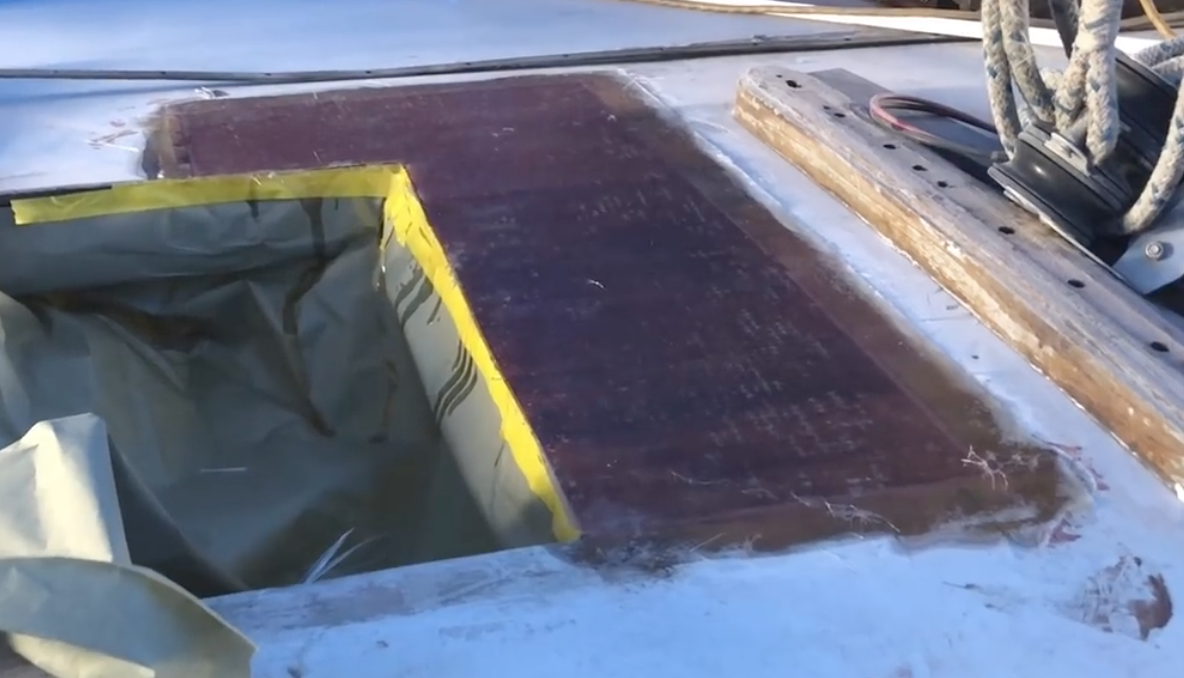 The process starts with grinding a bevel on the edges of the existing material. The purpose behind this is so that the layers of glass continue to overlap broader and wider onto the old surface. Beveling the edge lets the joint between the 2 surfaces be gradual and broader giving it more bonding strength.
The process starts with grinding a bevel on the edges of the existing material. The purpose behind this is so that the layers of glass continue to overlap broader and wider onto the old surface. Beveling the edge lets the joint between the 2 surfaces be gradual and broader giving it more bonding strength.
The forward hatch had new core installed right up to the edge of the hatch opening. This had 4 layers of fiberglass applied to it. This is done with polyester resin with 1709 biaxial mat. This bonds well to the other surfaces and a layer of chop strand allow the fibers to integrate well into the shapes around them.
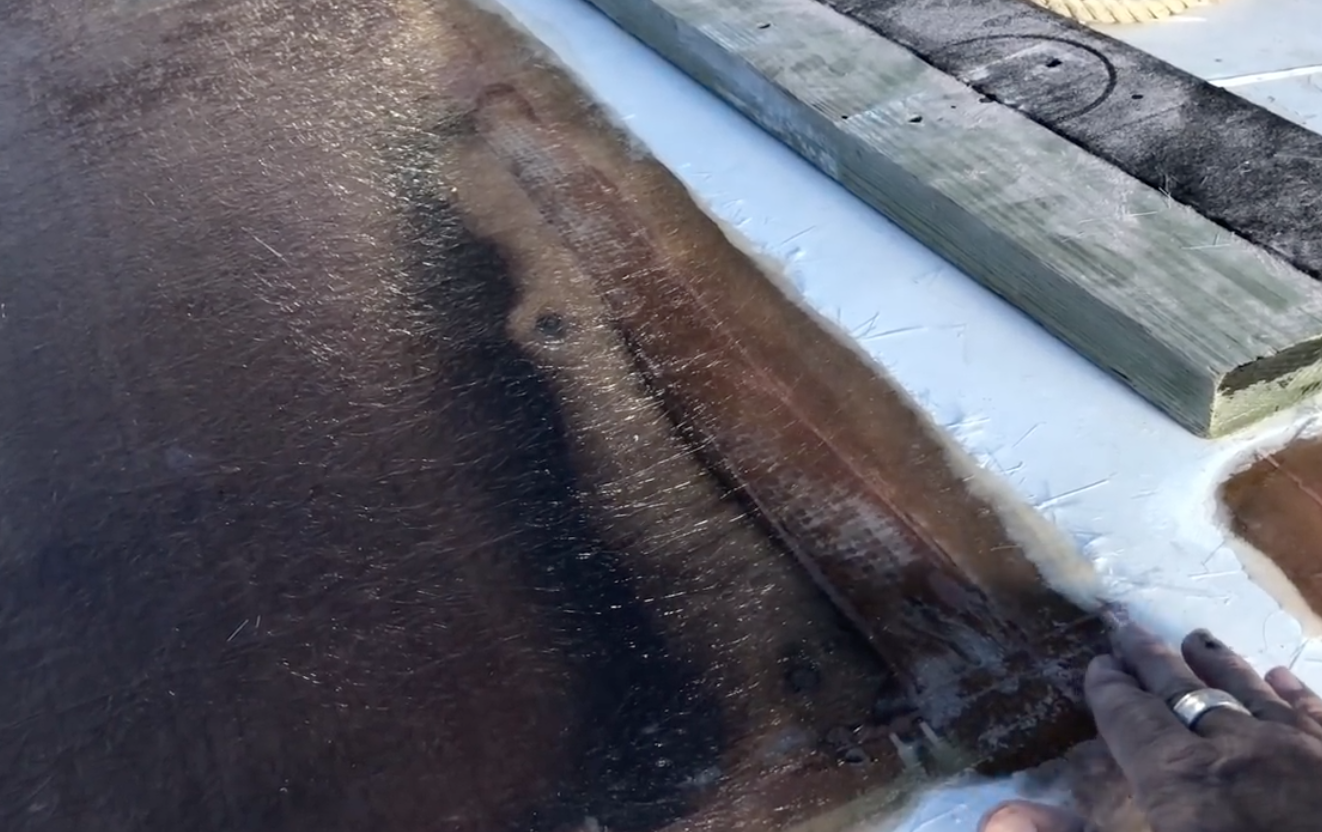 The next section that had glass applied was the large section on the port side of the coach house roof. Because this section was only about 14-18 inches wide, it didn’t need to have the wood curved to the shape of the roof. The glass can be sanded and faired to take the form in the finish work. This is not the case in the next section, however.
The next section that had glass applied was the large section on the port side of the coach house roof. Because this section was only about 14-18 inches wide, it didn’t need to have the wood curved to the shape of the roof. The glass can be sanded and faired to take the form in the finish work. This is not the case in the next section, however.
The large one that overlaps the companionway entrance and goes under the mizzenmast is a bit more critical. This is a large area that is comprised of several different sheets of new marine grade plywood core.
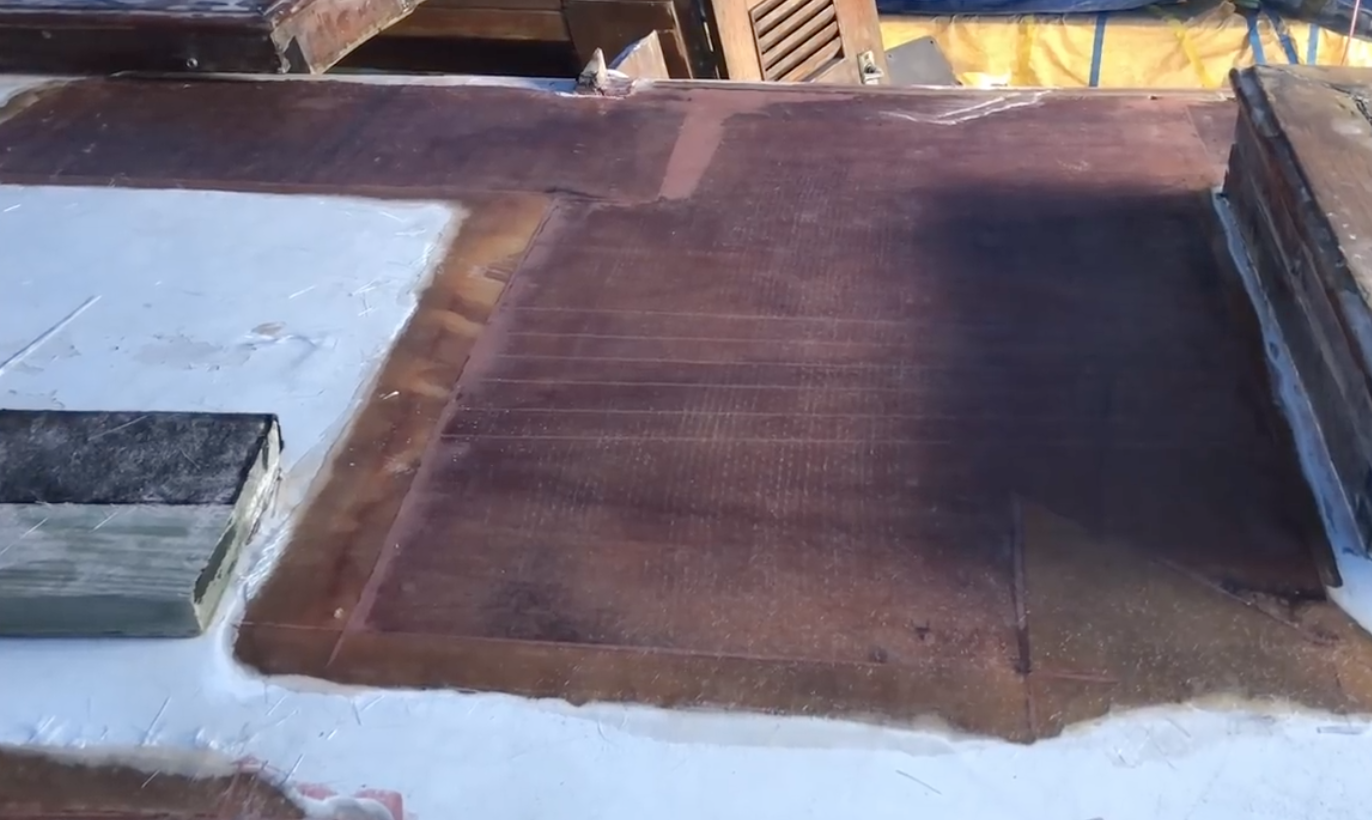 It also has the fiberglass covering it in many layers. More will need to be added as there are still some low spots compared to the rest of the roof height.
It also has the fiberglass covering it in many layers. More will need to be added as there are still some low spots compared to the rest of the roof height.
If you look closely, you can notice the cuts in the top of the core that was made to allow it to arch and bend across the curve of the roof. The cuts remained on top which allowed the flow of resin to fill those grooves before the sheets of fiberglass mat were installed. This area must be solid given it sits on top of the compression structure for the mizzenmast and all that weight.
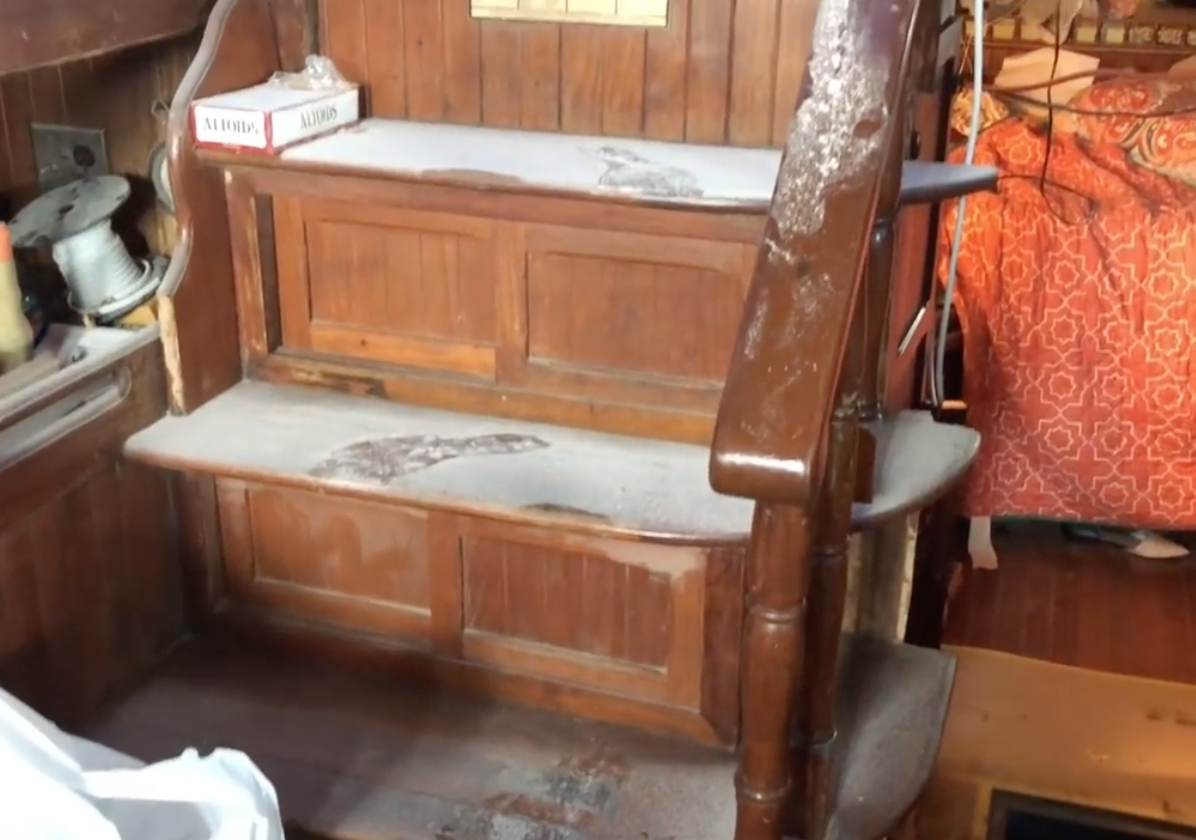 All this work and griding make a heck of a mess. I had the ports installed, and the openings taped up except for the louvered entry doors. The amount of dust down below was substantial. I have been cleaning it all up with a vacuum to keep it under control every time I am on the boat. It looks like it snowed down below.
All this work and griding make a heck of a mess. I had the ports installed, and the openings taped up except for the louvered entry doors. The amount of dust down below was substantial. I have been cleaning it all up with a vacuum to keep it under control every time I am on the boat. It looks like it snowed down below.
The next step will be clean and fair the bottom of the roof from inside.

